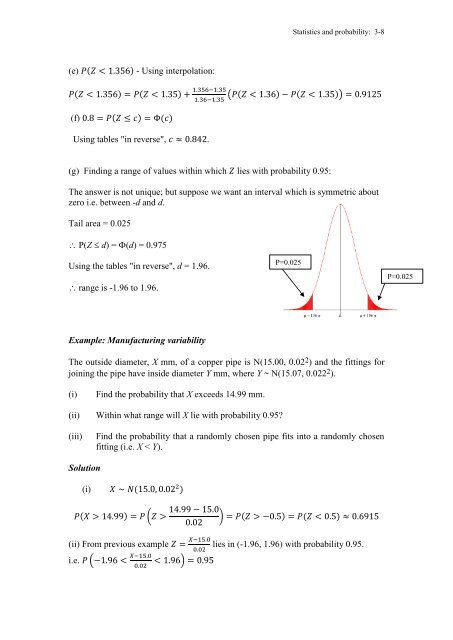3. Continuous Random Variables
3. Continuous Random Variables
3. Continuous Random Variables
Create successful ePaper yourself
Turn your PDF publications into a flip-book with our unique Google optimized e-Paper software.
(e) - Using interpolation:<br />
(f)<br />
Using tables "in reverse", .<br />
Statistics and probability: 3-8<br />
( )<br />
(g) Finding a range of values within which lies with probability 0.95:<br />
The answer is not unique; but suppose we want an interval which is symmetric about<br />
zero i.e. between -d and d.<br />
Tail area = 0.025<br />
� P(Z � d) = �(d) = 0.975<br />
Using the tables "in reverse", d = 1.96.<br />
� range is -1.96 to 1.96.<br />
Example: Manufacturing variability<br />
The outside diameter, X mm, of a copper pipe is N(15.00, 0.02 2 ) and the fittings for<br />
joining the pipe have inside diameter Y mm, where Y ~ N(15.07, 0.022 2 ).<br />
(i) Find the probability that X exceeds 14.99 mm.<br />
(ii) Within what range will X lie with probability 0.95?<br />
(iii) Find the probability that a randomly chosen pipe fits into a randomly chosen<br />
fitting (i.e. X < Y).<br />
Solution<br />
(i)<br />
(ii) From previous example<br />
i.e. (<br />
(<br />
)<br />
)<br />
P=0.025<br />
lies in (-1.96, 1.96) with probability 0.95.<br />
P=0.025



